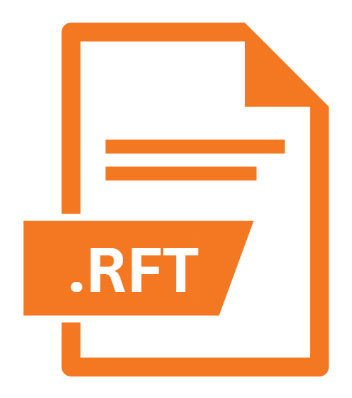.RFT File Extension

Revisable Form Text Document
| Developer | IBM |
| Popularity | |
| Category | Text Files |
| Format | .RFT |
| Cross Platform | Update Soon |
What is an RFT file?
.RFT file extension, short for Revisable Form Text, is associated with a specific type of text file format primarily used in the context of IBM’s Document Content Architecture (DCA).
This format is designed to facilitate the interchange of documents between different systems and applications, ensuring that document data remains consistent and unaltered during the transfer process.
RFT files are particularly noted for their ability to maintain document content along with layout and styling information, making them a useful choice for environments where document presentation needs to be preserved across different platforms and devices.
More Information.
Initially, the .RFT format was used primarily within IBM’s range of products and systems, designed to facilitate document interchange and consistent presentation across different IBM platforms.
Over time, as the need for cross-platform document interchange grew, the utility of the RFT format and the broader DCA framework became more widely recognized.
The format was particularly valued in enterprise environments where different computer systems needed to interact seamlessly and documents had to maintain their integrity and formatting across various platforms.
Origin Of This File.
The .RFT file format finds its origins in the early days of personal computing and document processing technology. Developed by IBM, the format was part of the company’s Document Content Architecture, an early framework for document interchange.
The DCA was an innovative step, introducing the concept of separating document content from presentation, thereby allowing documents to be transferred and processed independently of the systems that created them.
File Structure Technical Specification.
.RFT file is structured to include both the text content of a document and its formatting information. This includes font styles, margins, tabs, and all the necessary elements to maintain the document’s original appearance.
The file consists of a series of control codes and text elements, with the control codes dictating how the text elements are processed and displayed.
This structure allows .RFT files to maintain a high level of document fidelity, ensuring that documents look the same when opened on different systems.
How to Convert the File?
Converting .RFT files to other formats can be necessary for compatibility or ease of use. Common conversion targets include DOCX, PDF, and TXT files.
The conversion can be achieved through several methods:
- Using Dedicated Software: Some word processors and dedicated file conversion tools support the RFT format and can save it into different file types.
- Online Conversion Services: Various online platforms allow users to upload RFT files and convert them to other formats directly in the web browser.
While converting RFT files, some formatting may not transfer perfectly, especially when converting to a format with less rich formatting capabilities.
Advantages And Disadvantages.
The .RFT file format offers several advantages, particularly in environments where document consistency is crucial. The main benefits include:
- Consistency Across Platforms: RFT files maintain their formatting and structure regardless of the system or software used to view them.
- Rich Formatting Options: The format supports a wide range of formatting options, allowing for complex document layouts.
- Integration with IBM Systems: Being an IBM format, RFT files work seamlessly within IBM’s ecosystem of products and services.
There are also disadvantages to consider:
- Limited Compatibility: Outside of IBM systems and specific applications, support for RFT files can be limited.
- Complexity: The rich formatting options can lead to complexity, making RFT files more challenging to work with compared to simpler text file formats.
How to Open RFT?
Open In Windows
Using Microsoft Word:
- Right-click on the RFT file.
- Select ‘Open with’ > ‘Microsoft Word’.
- If Word is not listed, click on ‘Choose another app’, find Microsoft Word, and select it.
Using Notepad or WordPad:
- Right-click on the RFT file.
- Select ‘Open with’ > ‘Notepad’ or ‘WordPad’ for a text-based view. Note that complex formatting may not be displayed correctly.
Using Third-Party Text Editors:
- Download and install a third-party text editor like Notepad++ or Sublime Text.
- Open the application, then use the ‘File’ > ‘Open’ menu to navigate to and open the RFT file.
Open In Linux
Using LibreOffice Writer or OpenOffice Writer:
- Right-click on the RFT file.
- Select ‘Open with’ > ‘LibreOffice Writer’ or ‘OpenOffice Writer’.
Using a Text Editor:
- Right-click on the RFT file.
- Select ‘Open with’ > ‘Gedit’ (for GNOME) or ‘Kate’ (for KDE). Other text editors like Nano or Vim can also be used via the terminal.
Open In MAC
Using Pages:
- Right-click on the RFT file.
- Select ‘Open with’ > ‘Pages’.
Using TextEdit:
- Right-click on the RFT file.
- Select ‘Open with’ > ‘TextEdit’. Note that some formatting may not be displayed correctly.
Using Microsoft Word for Mac:
- If installed, right-click on the RFT file.
- Select ‘Open with’ > ‘Microsoft Word’.
Open In Android
Using File Viewer for Android:
- Download and install ‘File Viewer for Android’ or a similar app from the Google Play Store.
- Open the app and navigate to the RFT file to view it.
Using a Document Editing App:
- Apps like Microsoft Word for Android may be able to open and edit RFT files. Install the app and try to open the file from within the app.
Open In IOS
Using Files App:
- Locate the RFT file in your ‘Files’ app.
- Tap on the file. iOS may automatically suggest an app to open the RFT file, like Pages or Microsoft Word for iOS.
Using a Document Editing App:
- Apps like Microsoft Word for iOS or Pages can open RFT files. Open the app, navigate to the file location, and open it.













